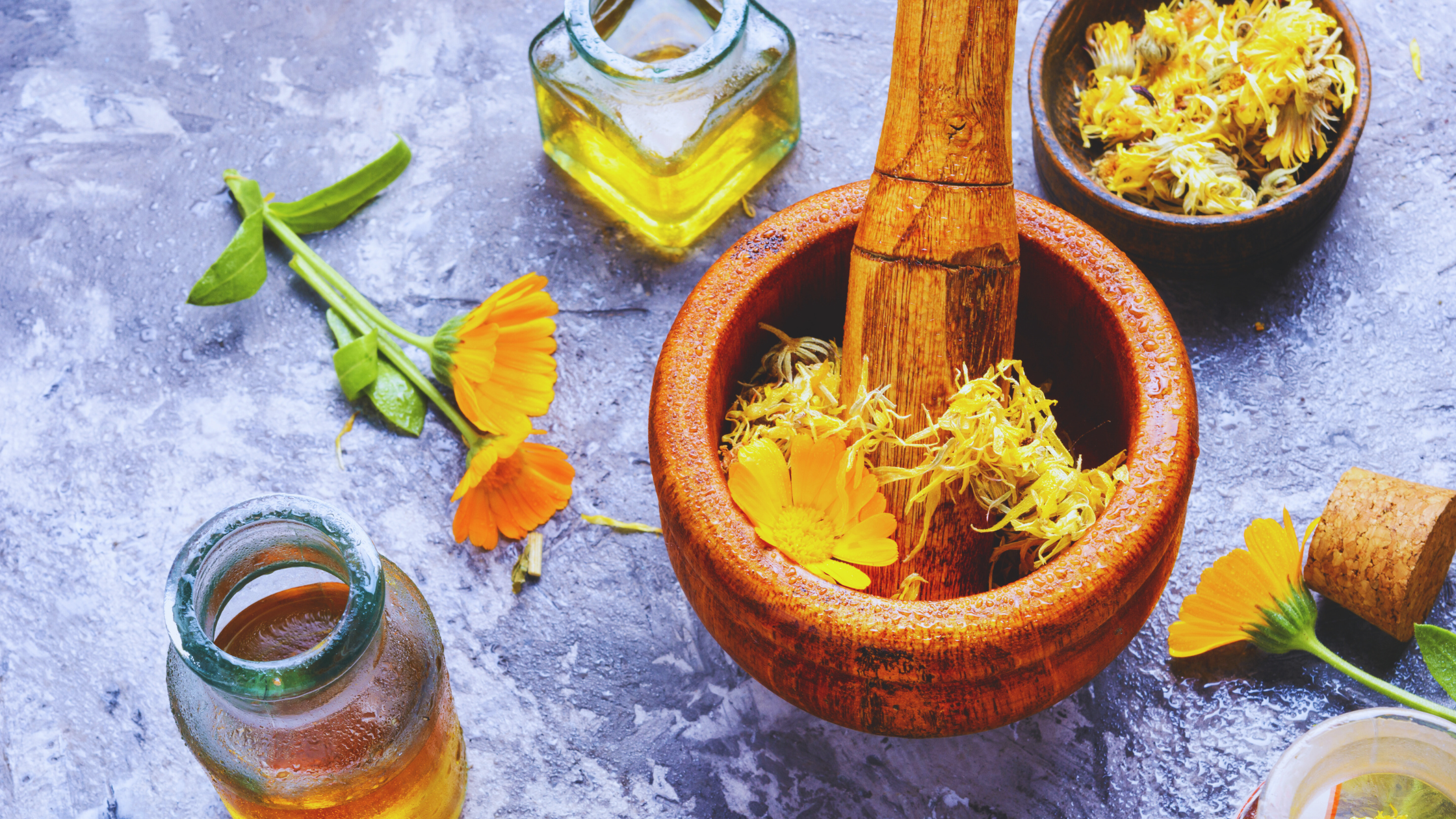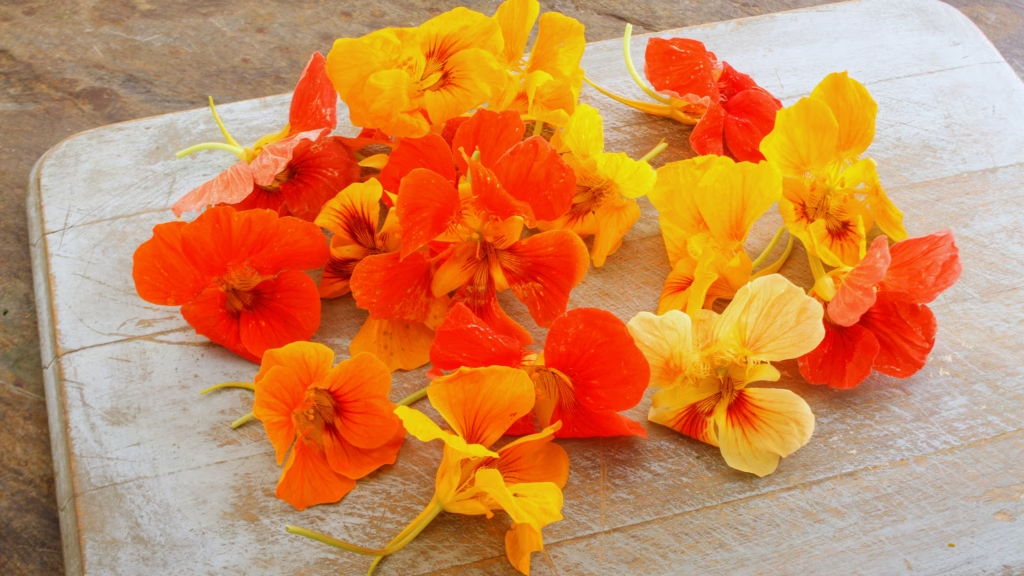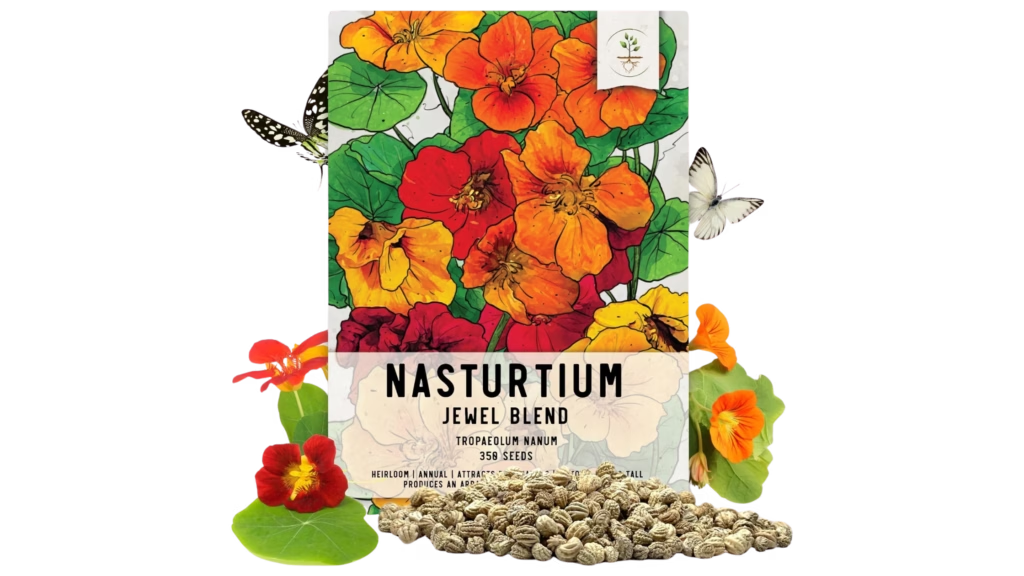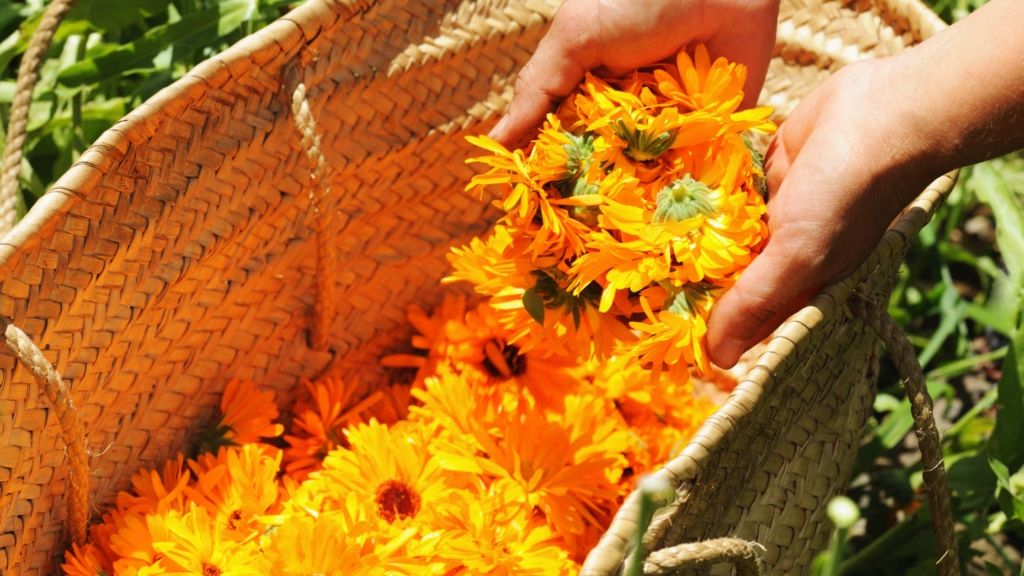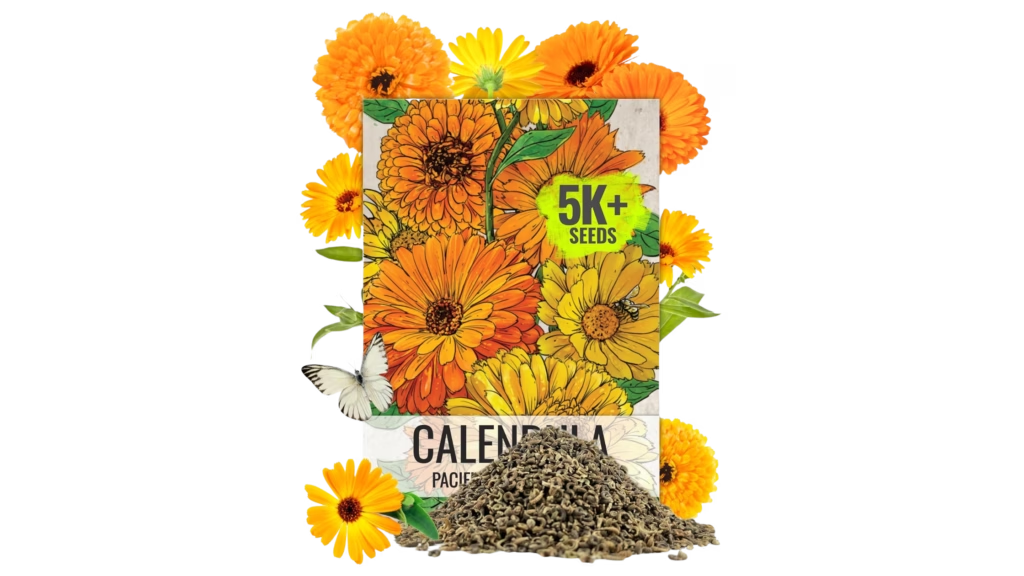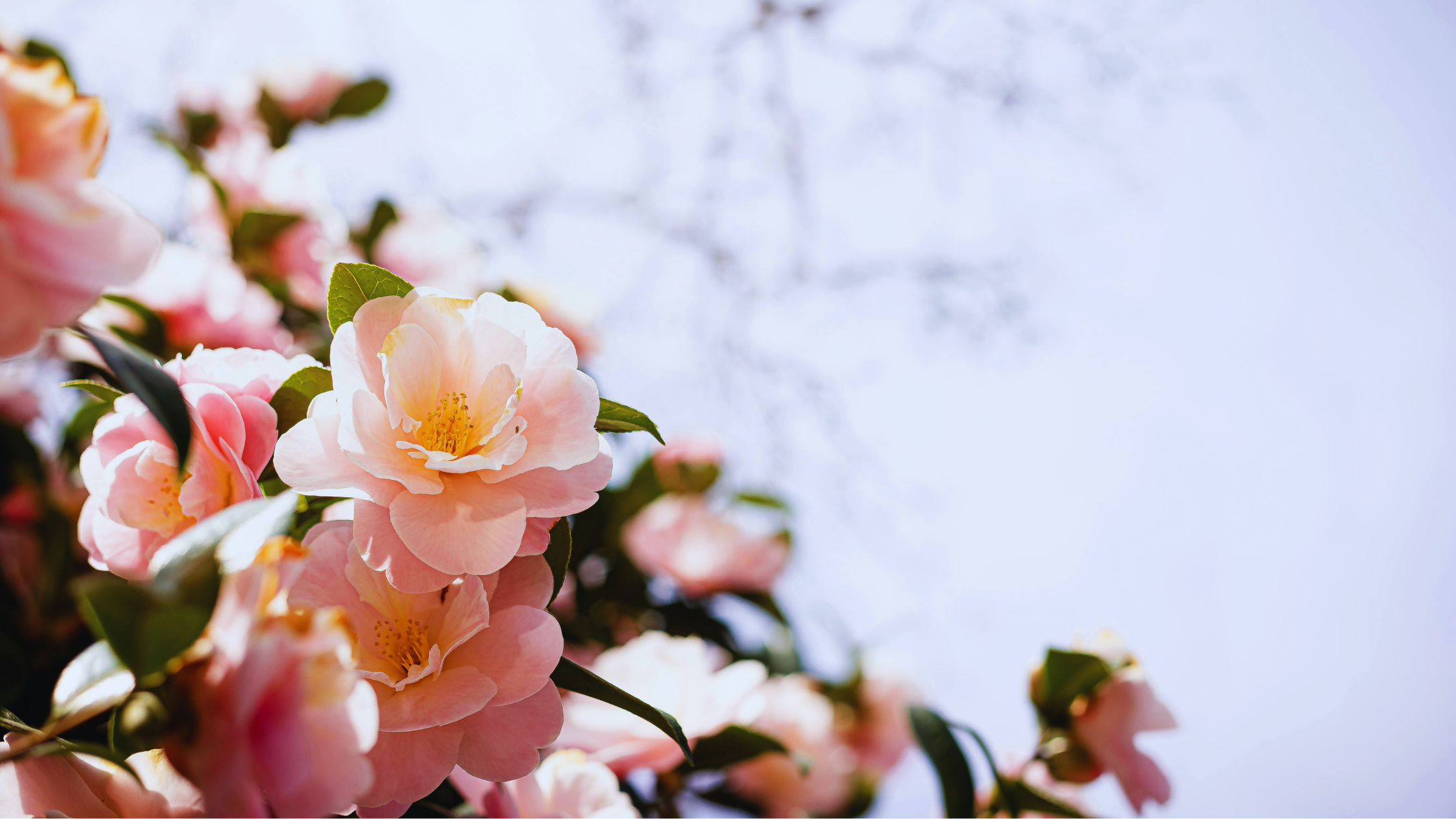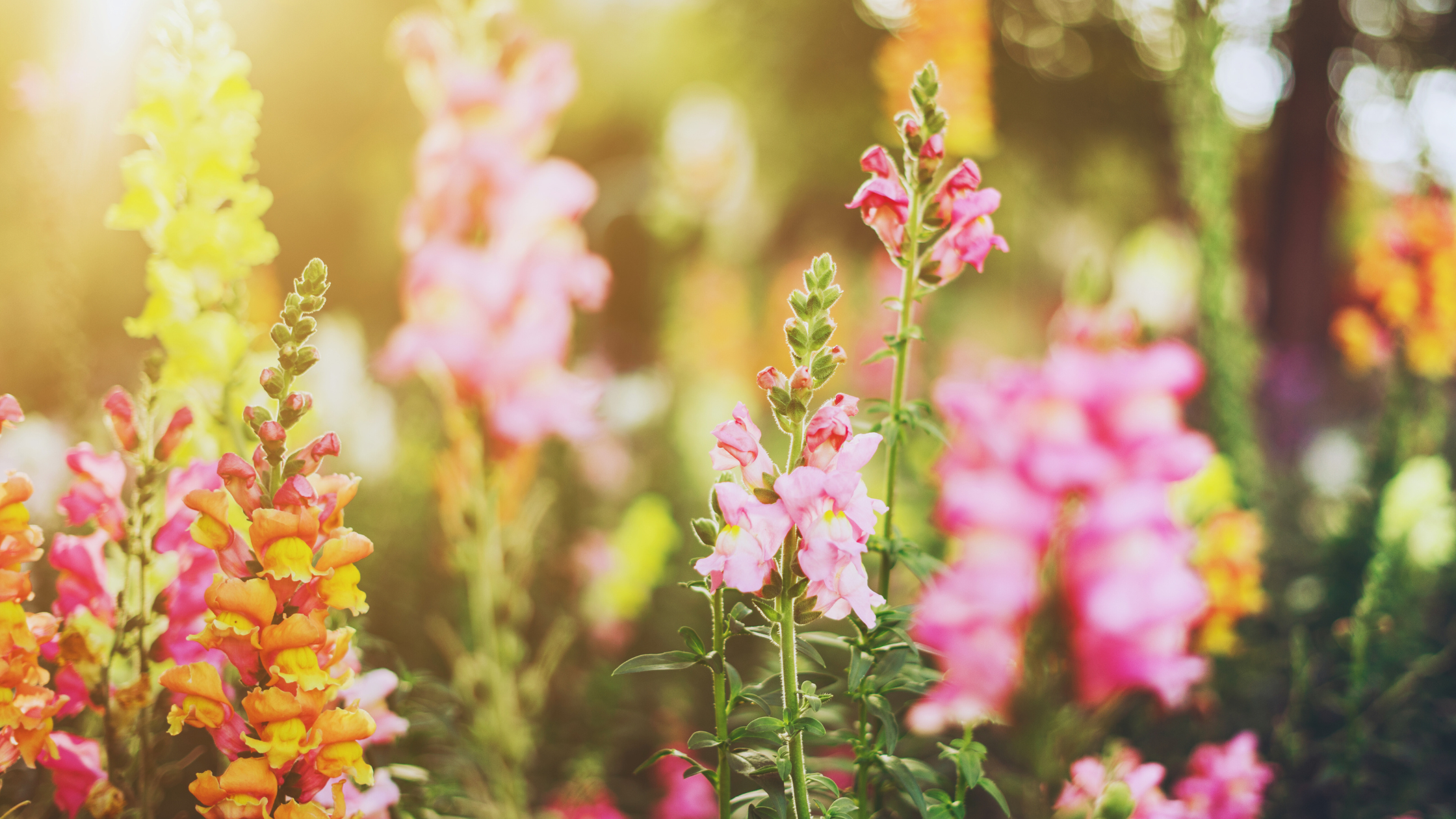Imagine stepping into your garden and snipping a few delicate blossoms to sprinkle over a salad, garnish a cocktail, or top off a beautifully plated dish. Growing your own edible flowers isn’t just about adding a pop of color—it’s about bringing a little whimsy, flavor, and homegrown charm to your kitchen. Whether you want to impress guests, elevate your meals, or simply enjoy the beauty of blooms with a purpose, an edible flower garden is a must-try this season. In this guide, we’ll explore the top 7 edible flowers, what they taste like, and creative ways to incorporate them into your seasonal recipes —because beauty should be both seen and tasted!
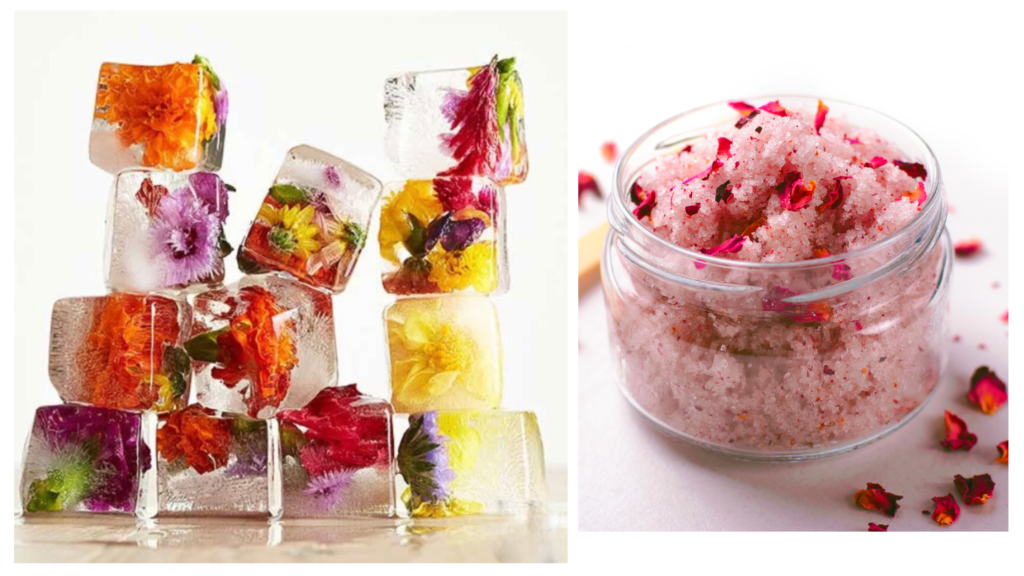
1. Nasturtiums:
Flavor: Peppery and slightly spicy, similar to watercress.
Uses: Perfect for salads, sandwiches, and garnishes. The vibrant orange and yellow blooms add a pop of color to any dish. Both the flowers and the leaves are edible.
- Amazon Best Seller: Seed Needs 1.5 Ounce 350+ Nasturtium Seeds ‘Jewel Mixture’
2. Calendula (Marigold):
Flavor: Slightly spicy and tangy.
Uses: Use fresh or dried in soups, stews and as a natural food coloring. Calendula petals lend a beautiful golden hue to dishes. They can also be eaten raw/fresh in salads. Calendula is also known for its anti-inflammatory properties so is popular as a tea or even made into an infused oil.
- Amazon’s Choice: Seed Needs 5,000+ Calendula Seeds Pacific Beauty Mix
3. Roses:
Flavor: Delicate, floral, with subtle fruity notes.
Uses: Use fresh or dried in desserts, beverages, jams, and as a garnish for dessert dishes. Rose petals are also popular for making fragrant rose water. The skincare industry can’t get enough of this heavenly flower either due to its many amazing benefits.
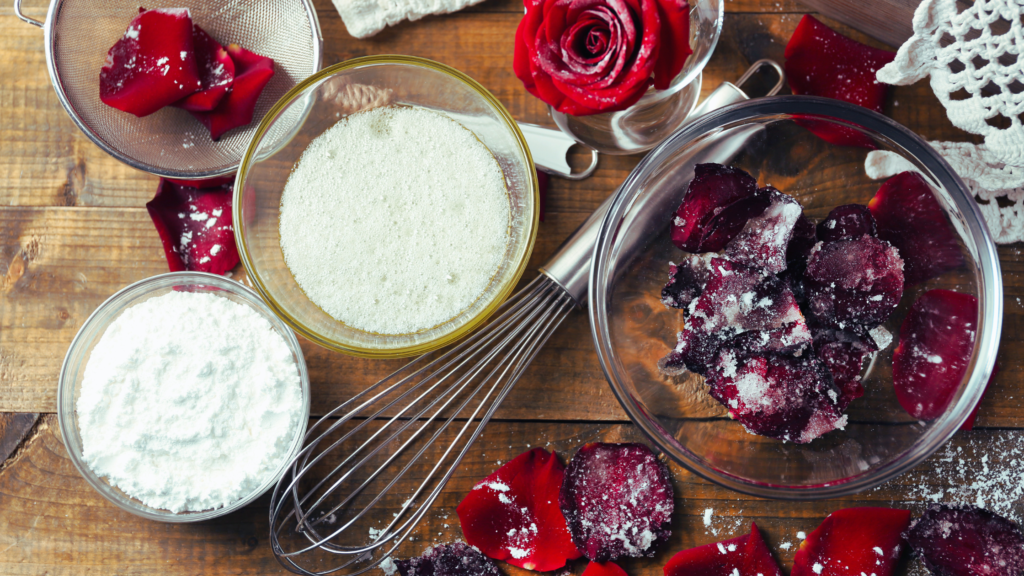
- Amazon’s Choice: Tarkeeb Dried Rose Petals ~ All Natural | Edible Rose Petals
3. Violets:
Flavor: Sweet and floral.
Uses: Decorate cakes, pastries, and salads with fresh violet petals. Make candied violets or violet syrup for cocktails and desserts.
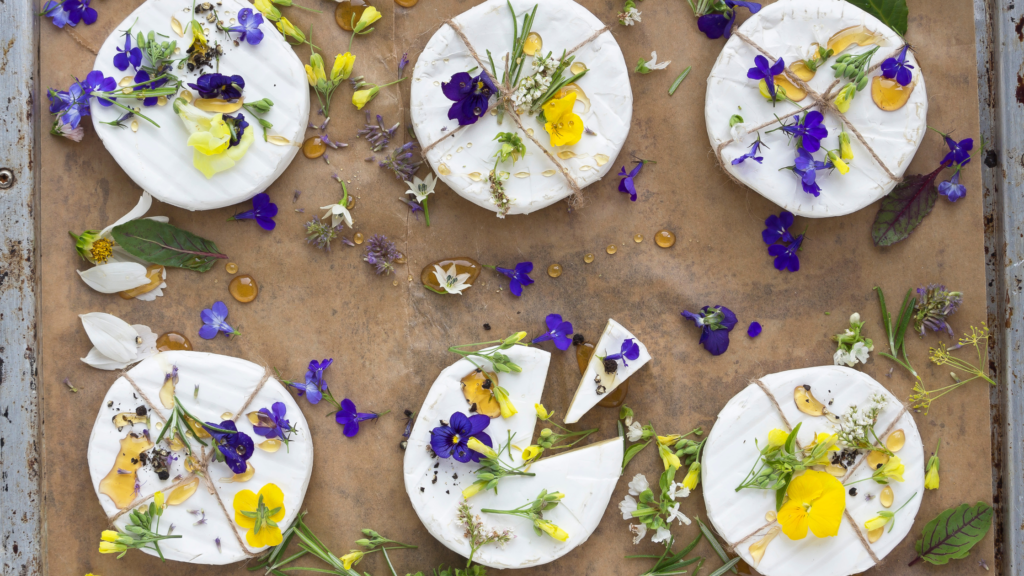
5. Borage:
Flavor: Mild, cucumber-like.
Uses: Garnish drinks, salads, and desserts with the striking blue flowers. Freeze borage flowers in ice cubes for a decorative touch in beverages.
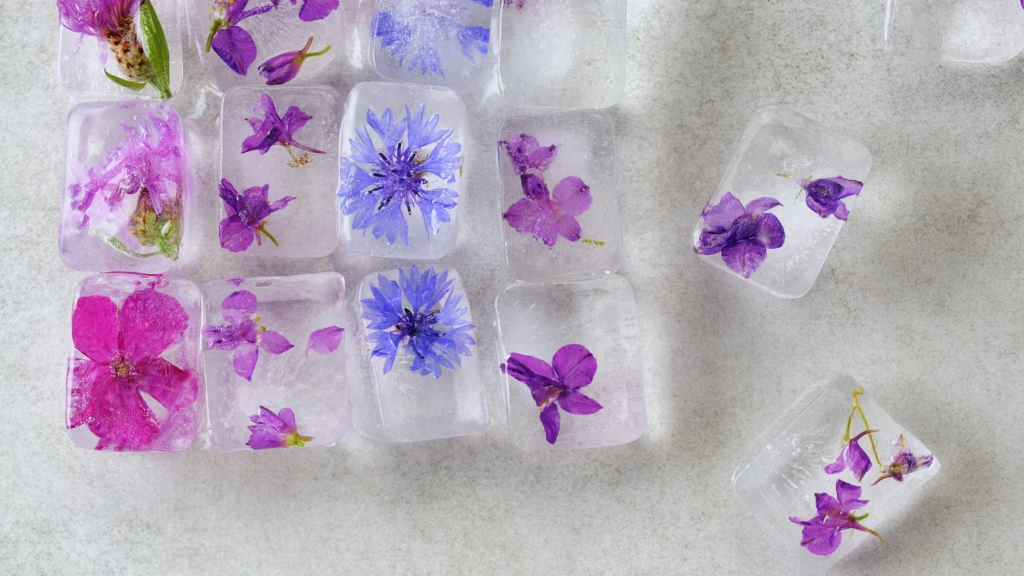
- Amazon Favorite: Seed Needs Borage Seeds for Planting Blue Star Flowers
6. Chamomile:
Flavor: Subtle, apple-like.
Uses: Chamomile tea is perhaps the most well-known use. Sprinkle over salads, incorporate into baked goods, or use to infuse syrups, sauces, and dressings.
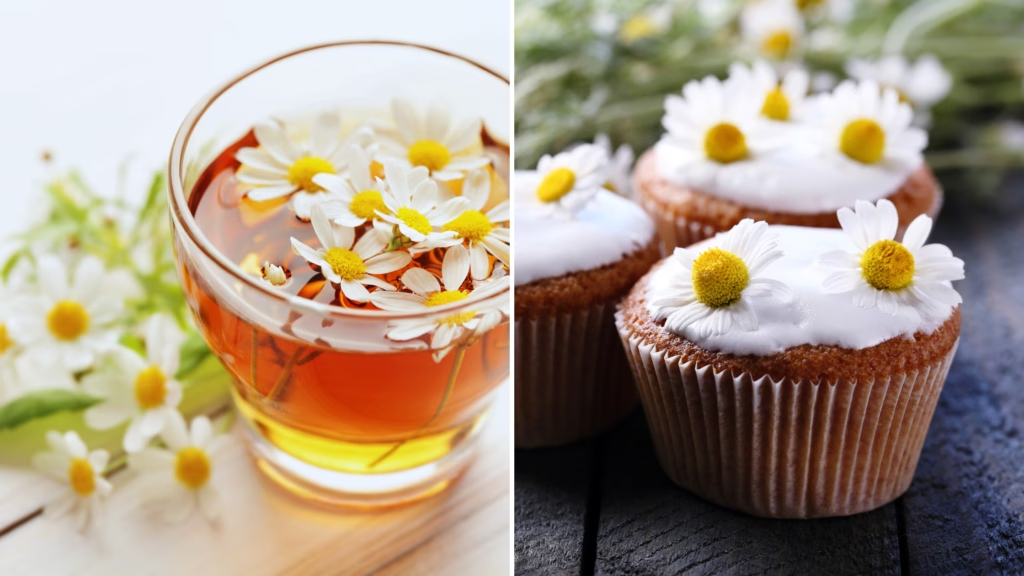
- Amazon’s Choice: Sow Right Seeds – Roman Chamomile Seeds for Planting
7. Dandelions:
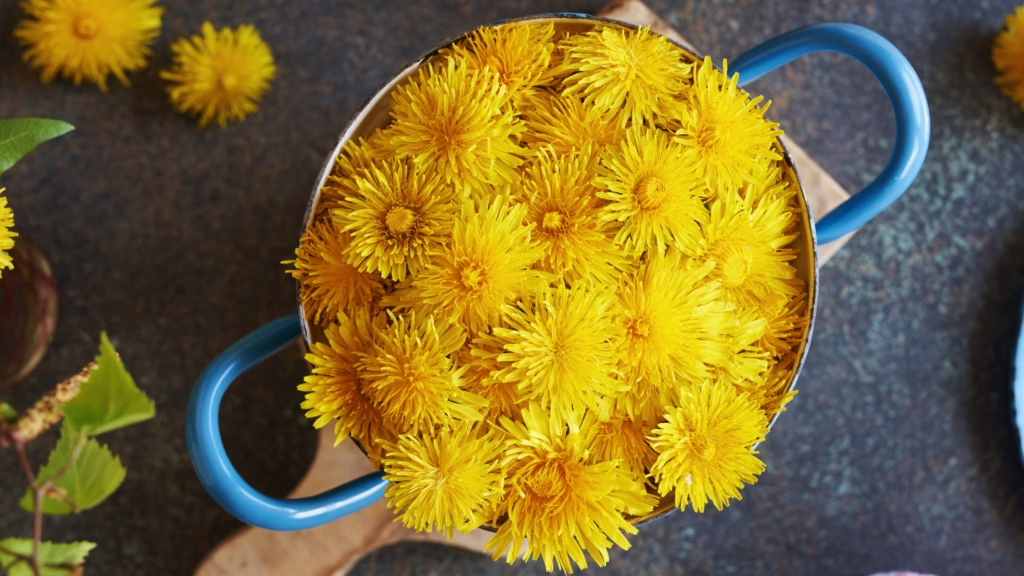
- Amazon Best Seller: Seed Needs Herb Seeds Common Dandelion | Non GMO Heirloom Untreated Seeds
Flavor: Slightly bitter, similar to arugula.
Uses: Use fresh or cooked in salads, soups, and fritters. Make dandelion wine or jelly with the petals. Additionally, dandelion flowers and leaves can be used to make dandelion tea, which is known for its potential health benefits, including supporting liver health and digestion.
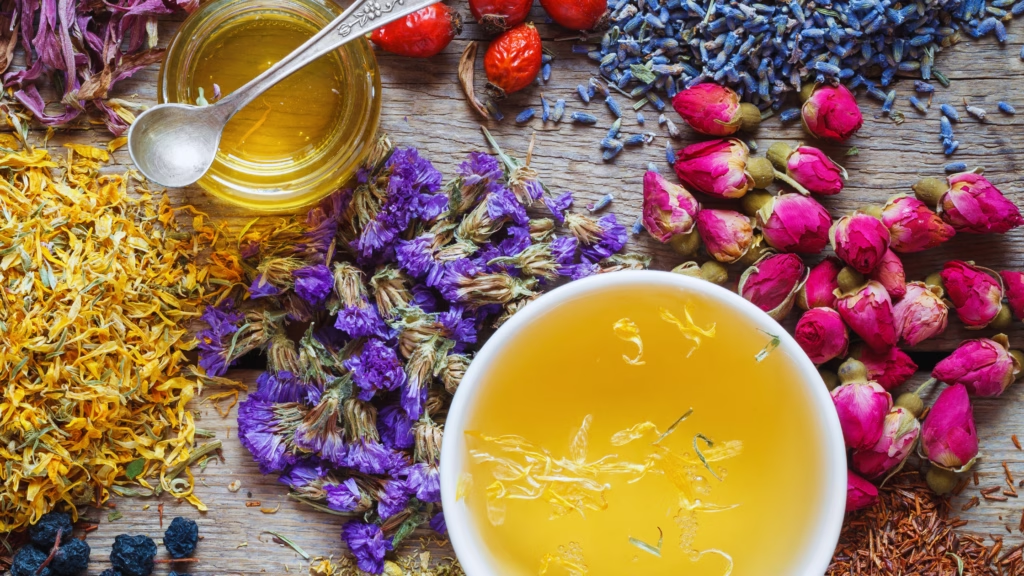
Beyond the plate:
Many edible flowers offer not only aesthetic appeal but also various health benefits. Here are some examples:
- Edible flowers often contain vitamins, minerals, and antioxidants that contribute to overall health and well-being.
- Digestive Aid: Chamomile, in particular, has been used traditionally as a remedy for indigestion, bloating, and gas.
- Anti-inflammatory Properties: nasturtiums and calendula, possess anti-inflammatory properties.
- Immune Support: elderflowers are known for their immune-boosting properties and are often used in herbal remedies for colds and flu.
- Antibacterial and Antiviral Effects: marigolds and nasturtiums, exhibit antibacterial and antiviral properties that can help protect against infections and support overall immune function.
As you embrace the beauty of spring and anticipate the warmth of summer, don’t just admire flowers on the table—incorporate them into your plates! From the peppery punch of nasturtiums to the delicate sweetness of roses, these blooms offer a symphony of flavors and aromas to elevate your dishes. Whether you’re garnishing salads, infusing syrups, or decorating desserts, edible flowers add a touch of elegance and whimsy to any plate. And why stop there? Freeze flowers in ice cubes for a decorative effect that’s both stunning and safe—just remember, these blooms aren’t just for show; they’re delicious too! So, go ahead and embrace these top 7 edible flowers in your spring and summer cooking—it’s sure to delight your senses and impress your guests! x
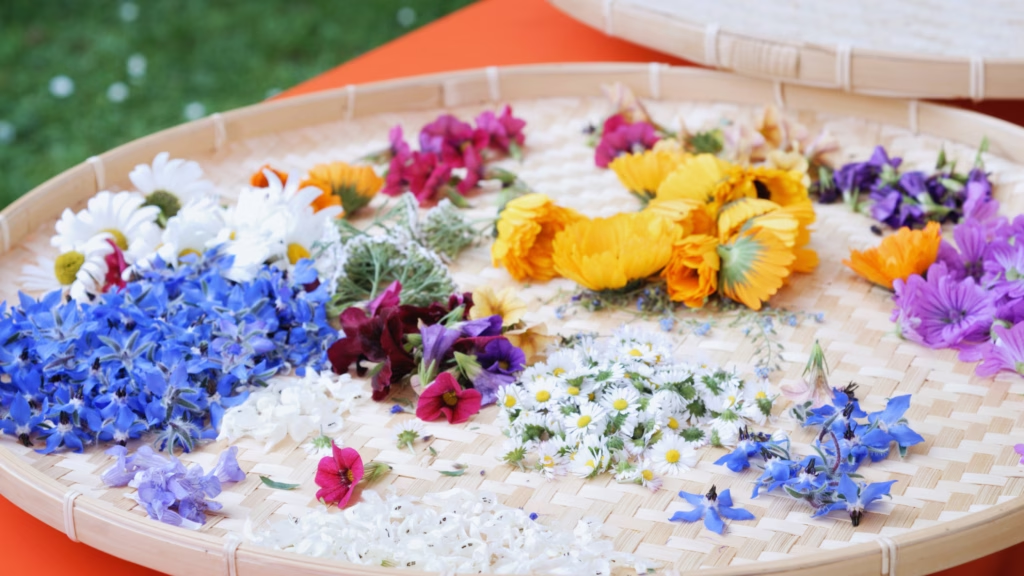
If you’re interested in growing your own flowers or herbs take a peek at some recent blog posts: 5 Must Grow Herbs and What to do with them and Prepare your Cut Flower Garden with these 5 tips
Disclaimer: As an Amazon Associate, we earn from qualifying purchases. This helps support the blog at no extra cost to you!
*Disclaimer: While edible flowers can offer various health benefits when consumed in moderation, always consult with a healthcare professional before incorporating large amounts of any edible flowers into your diet, especially if you have allergies, medical conditions, or are taking medications
